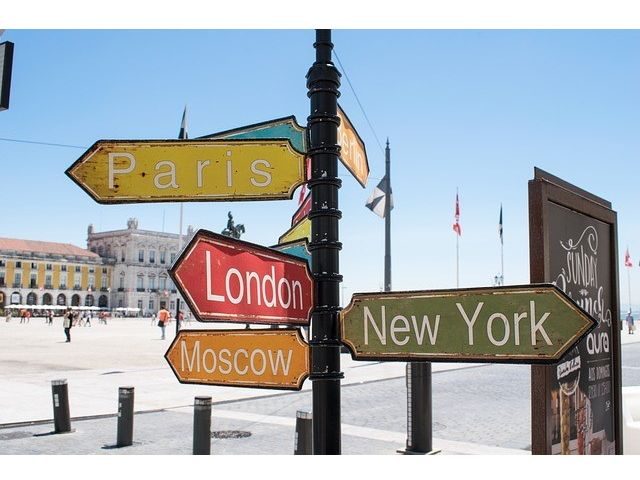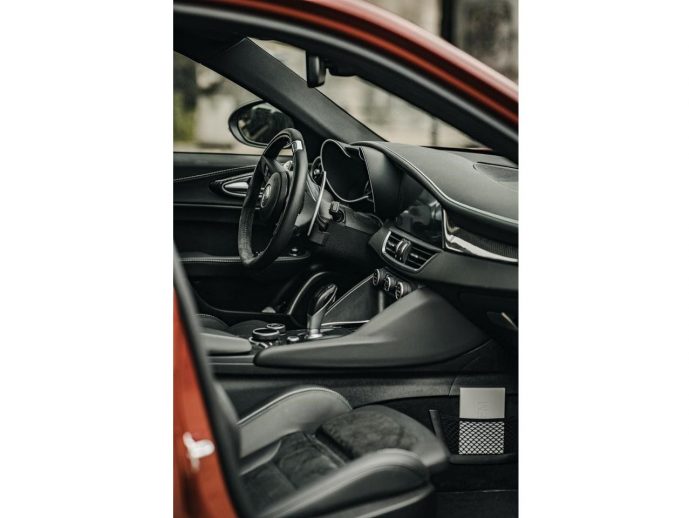Categories more
- Adventures (17)
- Arts / Collectables (15)
- Automotive (37)
- Aviation (11)
- Bath, Body, & Health (77)
- Children (6)
- Cigars / Spirits (32)
- Cuisine (16)
- Design/Architecture (22)
- Electronics (13)
- Entertainment (4)
- Event Planning (5)
- Fashion (46)
- Finance (9)
- Gifts / Misc (6)
- Home Decor (45)
- Jewelry (41)
- Pets (3)
- Philanthropy (1)
- Real Estate (16)
- Services (23)
- Sports / Golf (14)
- Vacation / Travel (60)
- Watches / Pens (15)
- Wines / Vines (24)
- Yachting / Boating (17)
Tips Specific For European Visitors Who Choose A Car Rental Road Trip
Published
10/12/2021Everyone wants to experience a road trip through Europe at least once, but, of course, it will take many holidays to encompass the entirety of each magnificent country. But there are many things a foreigner to these regions should know before taking the opportunity.
First, most people, even expats living in one of the countries, often choose a leiebil (rental car) for road trips or when deciding to go on excursions to other European countries.
You will likely experience different types of drivers in each region where you go, some more aggressive than others, making motorists protective of their own vehicles plus there's mileage.
No one wants to put excess mileage, wear and tear on their own vehicle if it's not necessary. It's ultimately worth the expense to use a car rental to protect the investment you make in an owned automobile and preserve its lifespan, albeit travel at leisure via roadway, which is often a preferred mode of transportation for many travelers.
The reason for that is the sheer independence and flexibility of the itinerary. Since there is such diversity in Europe compared to any place you'll find in the world, the freedom of a road trip allows exploring at leisure. Whether you choose a quaint village, mountainous regions, cities exploding with history, and so much more beyond these limits at a pace that you get to choose.
Let's peek at some tips specific for Europeans choosing the road trip in a rented car.
What Do European Visitors Need To Know When Road Tripping Via Car Rental?
Each country in Europe has unique mandates with driving. As far as America and Canada, you can typically rent a car with a passport and a driver's license. Some countries, though, do find it necessary to have an IDP or International Driving Permit. These rules will vary depending on the place, but you will need the IDP if you intend to drive within specific countries. Some of these include:
- Spain
- Romania
- Austria
- Croatia
- Italy
- Herzegovina
- Bosnia
- Hungary
- Greece
- Slovakia
- Poland
- Slovenia
The charge for these is roughly USD 20 or plus the amount for two passport photos.
● Driving Laws With Which European Tourists Need To Become Familiar
Whether a resident in a particular European country or a foreigner to Europe, it's vital to become somewhat familiar with laws before embarking on a road trip to another region.
Those coming from the United States need to understand that it is illegal to turn right when the light is red in Europe, although there are exceptions as in Germany, designated with road signs.
● Learn the road signs for the country you're visiting.
Street signs in European countries can have vastly different meanings from those in your home country or those in neighboring European countries. Before heading out on a road trip, it's wise to research the purposes for the particular region you'll be visiting and learn these expressly, so there's no disruption to the flow of traffic.
The last thing you want is to be responsible for an accident for being unaware, especially if you're driving a rented car. One thing to be mindful of is that the right lane in many countries like the Netherlands, Germany, and France will cite motorists for using the right lane to pass other drivers.
It is illegal in these and possibly other countries, while Ireland and the United Kingdom follow the right-lane passing rule. Occasionally, you will come upon an automobile whose turn signal indicates you should go around them. It's not a consistent symbol, but it is seen at times with heavy trucks and tractors.
● Speed limit enforcement
Plenty of European countries will implement automatic cameras to enforce speed limits on the traffic instead of using patrol officers, the standard for the United States. The speeding tickets come in the mail, much to many individuals' surprise because they don't realize this is happening as they're driving. Though, typically there are alerts to the cameras giving motorists time to slow down before approaching.
For those who don't pay attention or miss these signs, you will be at the mercy of whatever ticket is imposed upon you for speeding along, whether it be with the flow of traffic or not.
Generally, it would help if you realized there's something up when traffic suddenly begins to slow. That might be an indication there's a change of which you need to make yourself aware.
● Car seats are not a suggestion in Europe.
When driving with children in Europe, familiarize yourself with the restraint laws for vehicles. Any child 12 and under needs to be seated in the back and appropriately restrained. You will either need to bring your own car seat or ensure that you rent the proper equipment.
When flying to the EU from the States, FAA regulations permit car seats onboard, helping to save money on daily rental car fees for an incidental charge of a car seat.
The EU has slightly different car seat regulations meaning if you use an American style and get pulled over, you might be cited, but many visitors merely take the chance. Most people prefer their own for safety, hygiene, and fit/comfortability for their own child.
● The roundabout can take some getting used to.
Europeans have a fondness for the roundabout with many seen in each country instead of the 4-way intersection that the United States is gradually working itself away from - very slowly. The roundabout boasts (statistically) greater safety as traffic can flow without stopping through the circle around a central "island."
The only requirement is that each person understands to whom they are supposed to yield the right away and keep the flow moving inside the circle with a signal indicating where you intend to exit.
If you're unsure of your exit, continue for another turn around the circle until you get your bearings. No one will probably notice. Many foreigners have difficulties scanning the road signs quickly through the roundabout plus watching traffic; it requires a bit more experience.
● What is a ZTL zone?
A lot of the historic cities throughout Europe consist of locations where visitors traveling in rental cars are not permitted. Italy labels these as "ZTL Zones," but these might have different names in each country. Learn more about that here.
Most of these areas consist of exceptionally narrow streets and don't have the capacity to handle large traffic volumes. In recognizing the limitations, the city restricts the streets to only the local residents who are given permits for these locations, or these will be available only at specific periods during the daytime.
Most times, zones like these are monitored with street cameras showing those who enter without a permit or at an impermissible time of day, and that person will receive a ticket, perhaps months later, but it will go out.
The recommendation in these areas is to park the rented car outside the European city and transport via public transport.
Final Thought
The exciting thing about road tripping through Europe in a rental car is the independence you experience as a world traveler. Most of the time, you might not know where you're headed, find yourself lost at every turn with no one to ask for assistance, and experience much frustration attempting to travel on roads where you don't understand the traffic laws or the road signs, but somehow it feels ok.
The freedom to stop in a charming village and spend as long as you want or relax a few hours on a beach and then travel along a mountainous roadway gives you an experience worth everything the trials and tribulations of traffic might throw at you.
There's nothing as exhilarating as being behind the wheel and going wherever you please whenever you choose.


















